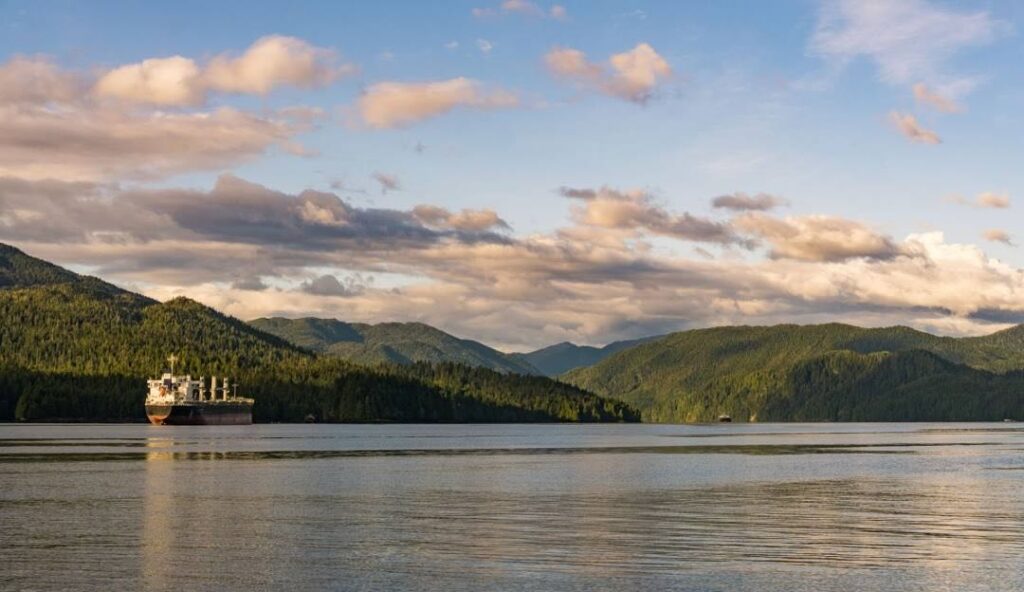Mid-Canada Corridor
Categories: Commentary, I am Inquisitive
First on the “Be Brave, Be Ambitious” agenda has to be the concept of the Mid-Canada Corridor (“MCC”, “Concept”). When I dismissed the idea of pipelines running coast-to-coast as un-ambitious, this was the alternative that I had in mind.
“The lack of a strategic plan for this corridor is not a recent concern. Retired major-general and author Richard Rohmer was advancing a vision for its prudent development and population as early as 1968. Rohmer recognized that this landmass had the potential to be the nation’s most important economic belt for the next 50 years, thus necessitating a strategy for its development.” John van Nostrand, Commentary No. 9, Mid-Canada Boreal Corridor: Planning for Canada’s Future, February 2016
My Earliest Memory of the MCC
My earliest memory of this Concept comes from evening discussions with my mother during the years 1966 and 1967. We lived in Sept-Iles, Québec . I don’t imagine that many of you know that its port had and has continued to develop state-of-the-art facilities that can accommodate the world’s largest bulk carriers. It has an annual cargo handling capacity of 100 MT, making it the largest mineral port in North America.
At that time, my mother worked as the editor of the Iron Ore Magazine. As such, she was privy to the research conducted by Acres Limited that resulted in a June, 1967 proposal for the MCC. This date coincides with my last month in high school. Acres saw Sept-Iles in the East and Prince Rupert in the West as the ideal “tide-water” ports with year-round access to anchor the imagined transportation corridor. Churchill, Manitoba and another port in the Western Arctic made up part of the network but the Acres-Rohmer proposal pre-dated the current impacts of climate change. Ergo, use of these ports was restricted for several months every year.


The Concept
The idea belongs to retired Major-General Richard Rohmner. In the 1960’s he saw that the mid-Canada boreal area had incredible economic potential. The key needed to unlock the potential – the MCC transportation corridor.
The School of Public Policy,University of Calgary continues its research into a renamed project, the Canadian Northern Corridor (“CNC”). This project consists of a 7,000-kilometre corridor that establishes a right-of-way in the Canadian north and near-north for road, rail, pipeline, electrical transmission, and communications. It would provide for interconnectivity with existing networks to the South.
The Advantages
I am not going to spend any time on the “why-nots”. Environmental groups, indigenous rights advocates, and other special interest groups will all have legitimate concerns that will have to be overcome. Engineering challenges – there will be many. So maybe I shouldn’t have said that the concept of coast-to-coast pipelines wasn’t ambitious as fossil fuel interests have been fighting the “why not” for years now. I should have said just not ambitious enough!
Many Purposes – More Acceptability?
While more ambitious, it is possible that pursuing the MCC / CNC nation-building project could achieve greater social acceptance.
- It addresses more than just the narrow interests of the oil and gas industries and …
- Broadens national distribution potential for hydro-electric power from Labrador, Quebec, Manitoba, and British Columbia leading to the eventual termination of supply agreements with the USA
- Export markets expand for existing mines and smelters, for iron ore, copper, zinc, and the multitude of other minerals across Ontario’s Ring-of-Fire and in Quebec.
- Provides better access for forestry activities
- Opens up development potential for the minerals / rare earths reshaping the world’s energy future
- Cost sharing for road, rail, pipeline, power grids, and communication entities.
- Addresses transportation issues that:
- hinder the development of indigenous businesses
- cause food insecurity and high-prices for staple goods
- contribute to high construction costs that lead to sub-standard housing and infrastructure in northern communities
- Gives impetus for the development of a mid-Canada tier of Canadian communities. Swedish inspiration – the Norbotten area or Skelleftea.
Investment into the Mid-Canada Corridor , Canadian Northern Corridor would be an ambitious and a nation building, forward thinking investment insulating the Canadian economy from the vagaries of any one super-economy’s isolationist interests.
Be strong! Be ambitious!
